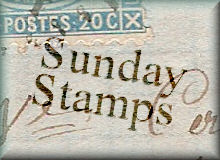
This postcard has a night view of the Prince's Palace in the Principality of Monaco. The stamp in the upper right corner is not an actual stamp. It is an image of the stamp printed as part of the postcard design. The stamp commemorates the wedding of Grace Kelly and Prince Rainier of Monaco on April 19, 1956. Grace Kelly was an American movie star.
For a couple of years when I was young, I both collected stamps and was fascinated with dime stores. One Saturday my father took me to a dime store in a neighboring town. Dime stores sold packages of stamps for collectors, so of course I had to look at the stamps. That is where I bought the stamps of the Monaco royal wedding. I seem to remember I was already aware of the wedding. Maybe I saw it on TV, or maybe it was because my Girl Scout troop was making scrapbooks of movie stars that year.
Below are the real stamps from my old stamp collection.
For a couple of years when I was young, I both collected stamps and was fascinated with dime stores. One Saturday my father took me to a dime store in a neighboring town. Dime stores sold packages of stamps for collectors, so of course I had to look at the stamps. That is where I bought the stamps of the Monaco royal wedding. I seem to remember I was already aware of the wedding. Maybe I saw it on TV, or maybe it was because my Girl Scout troop was making scrapbooks of movie stars that year.
Below are the real stamps from my old stamp collection.













































